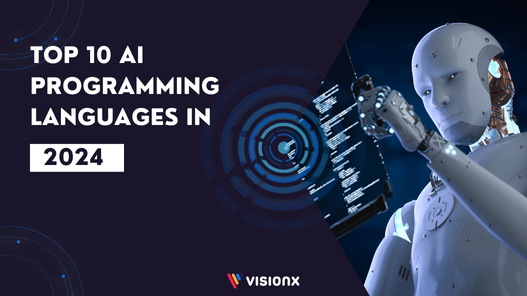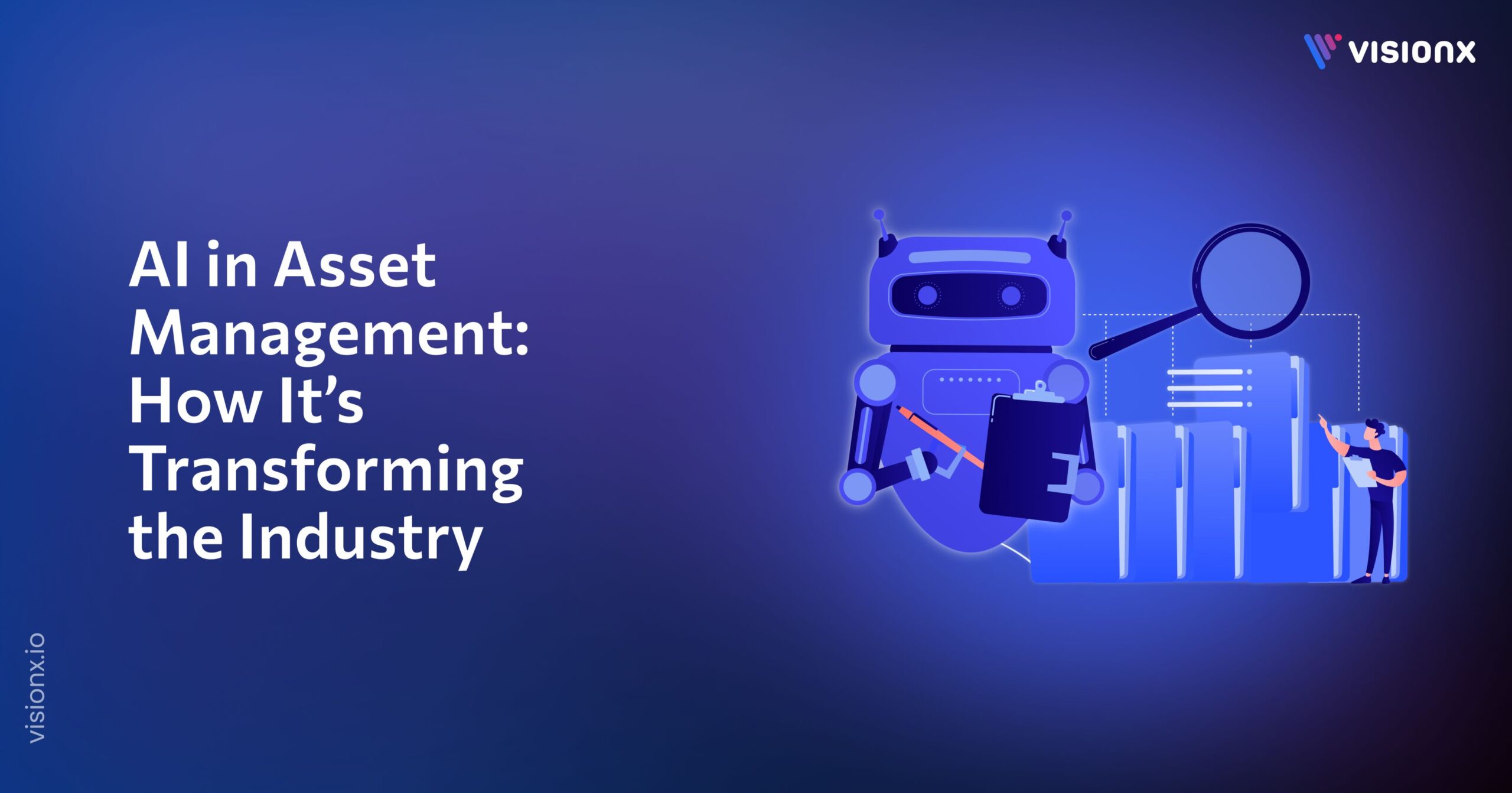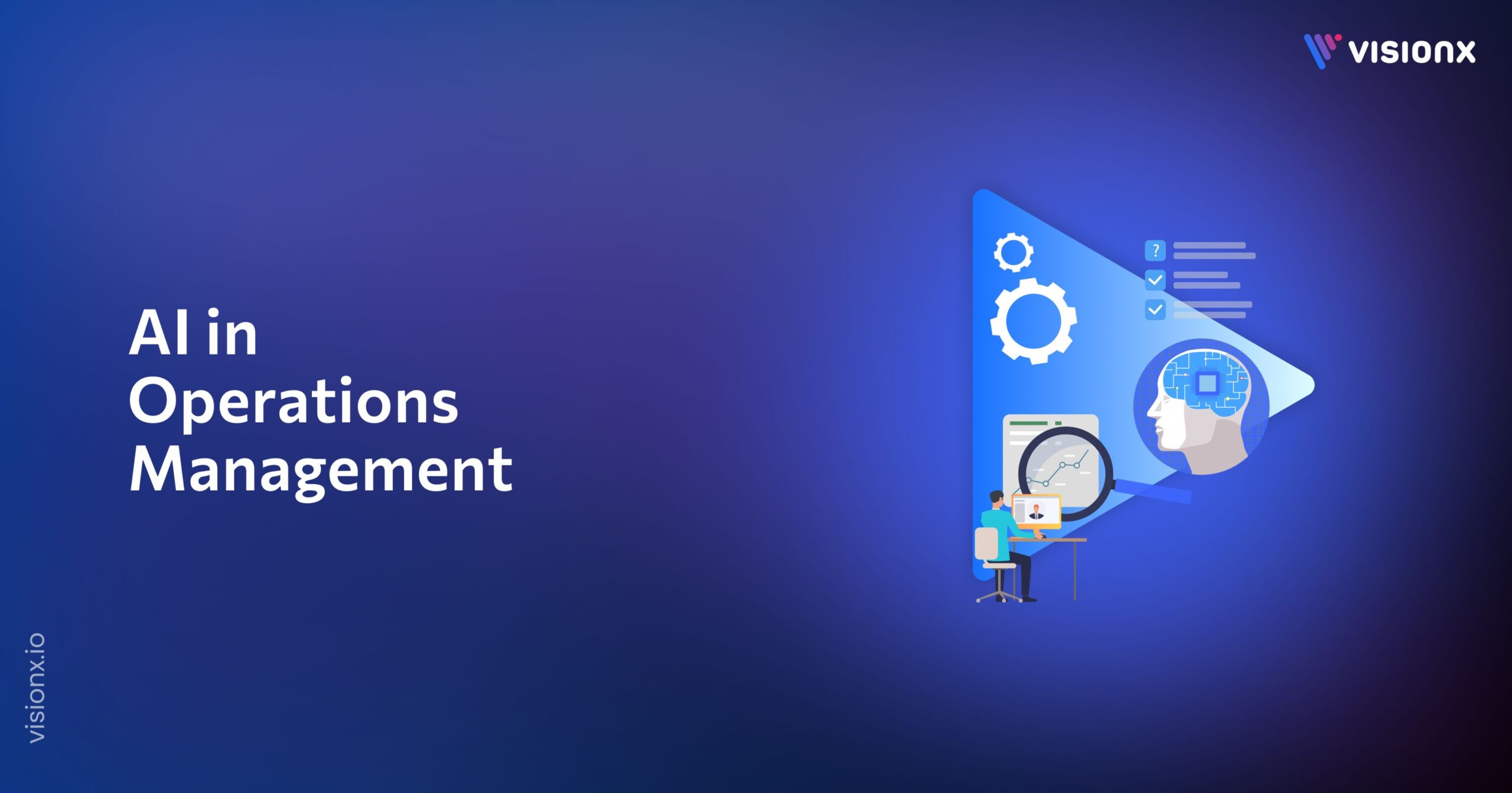Imagine a robot playing chess like a grandmaster, a phone app translating languages in real-time, or even a car driving itself down the street. Pretty cool, right? These are just a few examples of Artificial Intelligence (AI) in action!
Think of AI as a super-smart computer program that can learn and solve problems independently. It’s like having a super-powered brain helping us in many ways, from making our lives easier to tackling big challenges like climate change and disease.
To create these smart AIs, we need AI programming languages. They’re like secret codes that tell the computer exactly what to do, step-by-step. Just like learning any language, there are different ones for different tasks, and AI programming languages teach computers how to think and learn like us.
How to Choose the Best Programming Languages for AI?
Not all languages are the same. When choosing the best one for AI, people look at a few things:
- Popularity: If many people use a language, there’s a big community to learn from and get help.
- Ease of Use: Some languages are easier to learn and use, making them great for starting.
- Libraries and Tools: Imagine having a giant toolbox. Some languages have more tools that make building AI stuff easier and faster.
- Performance: This is about how fast and efficiently a language can make the AI run. Some languages are like sports cars, really fast and powerful for specific tasks.
Which Programming Language is best for AI?
Python is recognized as one of the foremost programming languages for beginners and experts in AI owing to its comprehensive array of libraries and ease of use. However, other programming languages like Java, C++, R, and Haskell are also essential for building robust AI solutions. The best programming language depends on the specific needs of the AI project.
Top 10 AI Programming Languages in 2025
Here are 10 of the most popular AI programming languages used for developing cutting-edge solutions in 2025;
1. Python:
Python is the language of choice for many in the generative artificial intelligence field due to its simplicity and readability. Its syntax is intuitive, allowing for clear code that’s easy to understand and write. This ease of use significantly lowers the barrier to entry for beginners in AI development, facilitating a smoother learning curve.
Here’s why Python is so popular AI language:
- It’s like plain English: Unlike some languages that look like alien code, Python’s syntax is clear and logical, making it easier to learn and write code, even for beginners.
- Toolbox Time!: Python has amazing libraries like TensorFlow and PyTorch, packed with pre-built tools and tricks for AI tasks.
- Community Power: With millions of users worldwide, Python has a massive community ready to help and answer your questions.
2. Java:
Java is a popular choice for complex AI projects due to its wide use in enterprise environments and scalability. It is the perfect option for creating high-performance, large-scale AI applications because of its strong memory management capabilities and robust architecture. Java’s ability to run almost anywhere without modification (made possible by the Java Virtual Machine, or JVM) guarantees that applications can easily scale across various environments. This cross-platform compatibility is a big plus for businesses using AI solutions in various computing environments.
Java brings two key strengths:
- Scalability Powerhouse: Java can handle complex AI projects with tons of data and calculations. This language can expand and change to adapt according to your AI project needs.
- Good Choice for Enterprise: Many large companies and organizations already use Java, so it’s a familiar choice for building enterprise-grade AI systems. Java has already been adopted by many influential builders, making collaborating and sharing resources easier.
However, Java can be a bit more verbose compared to other languages. It requires writing a detailed instruction manually. It might take more coding lines to explain, but the instructions are clear and precise, leading to reliable results. While it might not be the fastest, it’s known for its accuracy and stability.
3. R:
R is the foundation of the data science community due to its unmatched capabilities in statistical analysis and data visualization. Its extensive library of statistical and graphical modeling packages makes complex data analysis comparatively simple for researchers and analysts. R is a preferred tool for visual data exploration because it can generate excellent graphs and plots for various data types, making it easier to communicate quantitative insights.
- Data Detective: R is a master of statistics, able to analyze and understand patterns in data like no other. It is like a super-powered calculator that can crunch numbers and reveal hidden trends.
- Visualization Wiz: R is best for creating stunning and informative graphs and charts to showcase its findings. It transforms complex data and makes it easy to understand.
However, R has a bit of a learning curve compared to Python. Its syntax can differ slightly, and mastering its statistical tools takes practice.
4. Javascript:
JavaScript is increasingly becoming a key player in web-based AI and machine learning, transitioning from its traditional role in creating interactive web elements to facilitating complex AI functionalities directly in the browser. This shift is due to frameworks such as TensorFlow.js, which brings machine learning capabilities to JavaScript environments. It allows developers to implement and run models directly in the web browser without needing a server backend for computations.
- Web-based AI: Websites and web apps are built with JavaScript, so it’s the natural choice for adding AI features directly to them.
- Machine Learning Made Easy: Frameworks like TensorFlow.js bring machine learning capabilities to JavaScript, allowing you to train and run AI models right in your browser. Imagine teaching your website to recognize different images or translate languages, all without a powerful computer!
And the best part? JavaScript is known for being beginner-friendly! Frameworks like TensorFlow.js offer user-friendly tools and tutorials, making it easier to jump into web-based AI even if you’re new to coding.
However, JavaScript might not be the strongest choice for complex AI tasks that require tons of processing power. It is great for quick tasks but might not win against other languages built for heavy calculations.
5. C++:
C++ is renowned for its speed and efficiency, especially in handling computational-heavy tasks. This makes it a preferred choice for AI projects where performance and the ability to process large volumes of data quickly are critical. The language’s efficiency comes from its close proximity to machine code. It allows direct manipulation of hardware resources. This low-level access facilitates optimized performance for algorithms that require intensive computation, such as those found in machine learning and deep learning applications.
C++ shines in two key areas:
- Speed: Like a finely tuned race car, C++ is incredibly fast and efficient, making it perfect for complex AI tasks requiring many calculations.
- Direct Hardware Control: C++ gives you more control over how your program interacts with the computer’s hardware, like its muscles and memory.
However, with great power comes great responsibility (and a steeper learning curve). C++ is a lower-level language, meaning it gets closer to the “bare metal” of the computer. It requires deeper technical knowledge than using pre-built components. This can be challenging for beginners but rewarding for experienced coders who want ultimate control and speed.
So, if you’re tackling complex AI tasks requiring lightning-fast calculations and hardware optimization, C++ is a powerful choice. But be prepared to invest more time and effort in learning it.
6. Julia:
Julia is a relatively new player in the programming world, quickly gaining traction in the artificial intelligence (AI) and scientific computing communities. Launched in 2012, Julia was designed to address the need for a high-performance programming language that is also easy to use. Its creators wanted to blend the mathematical power of MatLab, the statistical expertise of R, the dynamism of Ruby, the usability of Python, and the speed of C.
- Speed Demon on the Block: Julia is incredibly fast, rivaling even C++ in some tasks. It is perfect for complex AI models that require tons of calculations.
- Built for Science: Julia was designed specifically for scientific computing, with features that make it ideal for tasks like numerical analysis and data manipulation.
- Easy to Learn, Hard to Master: Julia balances being beginner-friendly and powerful. Its syntax is similar to other popular languages, making it easier to pick up, but its advanced features offer depth for experienced programmers. It is a language that grows with you, offering both accessibility and complexity.
However, Julia is still a young language, meaning its ecosystem of libraries and tools might not be as vast as some of its more established competitors. This can be a small hurdle for beginners relying on pre-built solutions, but the growth potential is exciting!
7. Lisp:
Lisp, with its long history intertwined with AI research, stands out as one of the best AI programming languages languages.
It is one of the oldest programming languages still in use, developed in the late 1950s with a focus on symbolic processing. Its design philosophy is closely aligned with the requirements of AI research, which often involves manipulating symbols and processing lists. This historical significance is not just nostalgia; it means Lisp has evolved alongside the field of AI, influencing and being influenced by it.
- Flexibility and Dynamism: Lisp is highly flexible, allowing rapid prototyping and dynamic development. Its features, like dynamic typing, conditionals, and recursion, are well-suited for AI tasks. Lisp programs can modify themselves, adapting to new information or problems during runtime, a powerful capability for AI applications that learn and evolve.
- Macros and Code-as-Data Paradigm: One of Lisp’s most powerful features is its macro system, which allows developers to extend the language in ways that suit their specific needs. The code-as-data paradigm (homoiconicity) enables programmers to easily generate and manipulate code, making Lisp exceptionally good for writing complex AI algorithms that can benefit from such metaprogramming capabilities.
- Garbage Collection: Automatic memory management via garbage collection is another feature that makes Lisp suitable for AI. This means developers can focus on the logic of their AI applications without worrying about manual memory allocation and deallocation, reducing the risk of memory leaks and other related issues.
However, Lisp’s learning curve can be steep for those unfamiliar with its unique syntax and programming model. Additionally, its popularity has waned compared to more modern languages like Python. It has emerged as a favorite in the AI community due to its simplicity and vast ecosystem of AI libraries.
8. Prolog:
Prolog, or “Programming in Logic,” is distinguished as a premier language for artificial intelligence (AI) development, particularly for applications requiring complex logical reasoning, natural language processing, and knowledge representation. Its prominence in the AI field can be attributed to several core characteristics and capabilities:
- Declarative Nature: Unlike imperative languages that describe the “how” of a problem, Prolog focuses on the “what.” Developers describe the problem’s logic through facts and rules, and the Prolog system is responsible for figuring out how to solve it. This aligns well with AI’s requirements, where defining logical relationships and rules is often more immediate than specifying explicit step-by-step algorithms.
- Built-in Backtracking: Prolog supports automatic backtracking, a feature that allows it to efficiently explore multiple paths to find solutions to logical queries. This capability is particularly useful in search algorithms and problem-solving scenarios common in AI, such as game AI or solving puzzles.
- Pattern Matching: Prolog excels at pattern matching, enabling it to easily parse and manipulate symbolic data. This makes it ideal for natural language processing and understanding.
However, Prolog’s unique approach and syntax can present a learning challenge to those more accustomed to traditional programming paradigms. Its specialized focus on logical reasoning and pattern matching also means that for certain types of AI applications, such as those requiring intensive numerical computation, other languages might be more suitable.
9. Haskell:
Haskell, renowned for its functional programming approach, offers a distinct advantage when writing concise and robust AI code. This approach emphasizes pure functions—functions where the output value is determined only by its input values, without observable side effects. This leads to easier code to test, debug, and reason about, which is particularly beneficial in the complex domain of AI, where algorithms must be reliable and efficient.
This can lead to several benefits:
- Concise Code: Functional programming often produces shorter, more readable code than traditional approaches. It’s like expressing complex ideas with elegant, minimalist sentences.
- Modular Design: Breaking down your code into independent steps makes it easier to understand, debug, and maintain, especially for complex AI systems. You can build your AI program with modular blocks, each with a clear purpose and easy to replace or modify.
- Less Prone to Errors: The way Haskell handles data and avoids certain common pitfalls can make your AI code less susceptible to errors, leading to more reliable and robust systems. It reduces the risk of unexpected crashes or glitches.
However, Haskell’s unique approach comes with its own challenges. Its syntax can be quite different from other languages, requiring a shift in thinking and a steeper learning curve for beginners. Imagine trying to read a poem in a language you’re not familiar with – it might take some extra effort to understand the beauty and meaning within.
10. Scala:
Scala is a popular choice for big data processing and Spark MLlib applications due to its scalability. Scala’s design offers a strong foundation for creating complex, high-performance computing applications by combining elements from both object-oriented and functional programming models. With this combination, programmers can easily write code ranging from small scripts to large systems while maintaining clarity and type safety.
Scala shines in two key areas:
- Scalability Champion: Like a skyscraper built to withstand any storm, Scala is designed to handle massive datasets and complex AI processes with ease.
- Big Data Dream Team: Scala works hand-in-hand with Apache Spark, a powerful big data processing framework. Libraries like Spark MLlib leverage Scala’s strengths to build and run large-scale AI models on massive datasets.
However, with great power comes great responsibility (and potentially a steeper learning curve). Scala combines object-oriented and functional programming styles, making it more complex than some other languages. It can be rewarding, but requires more dedication and practice to master.


